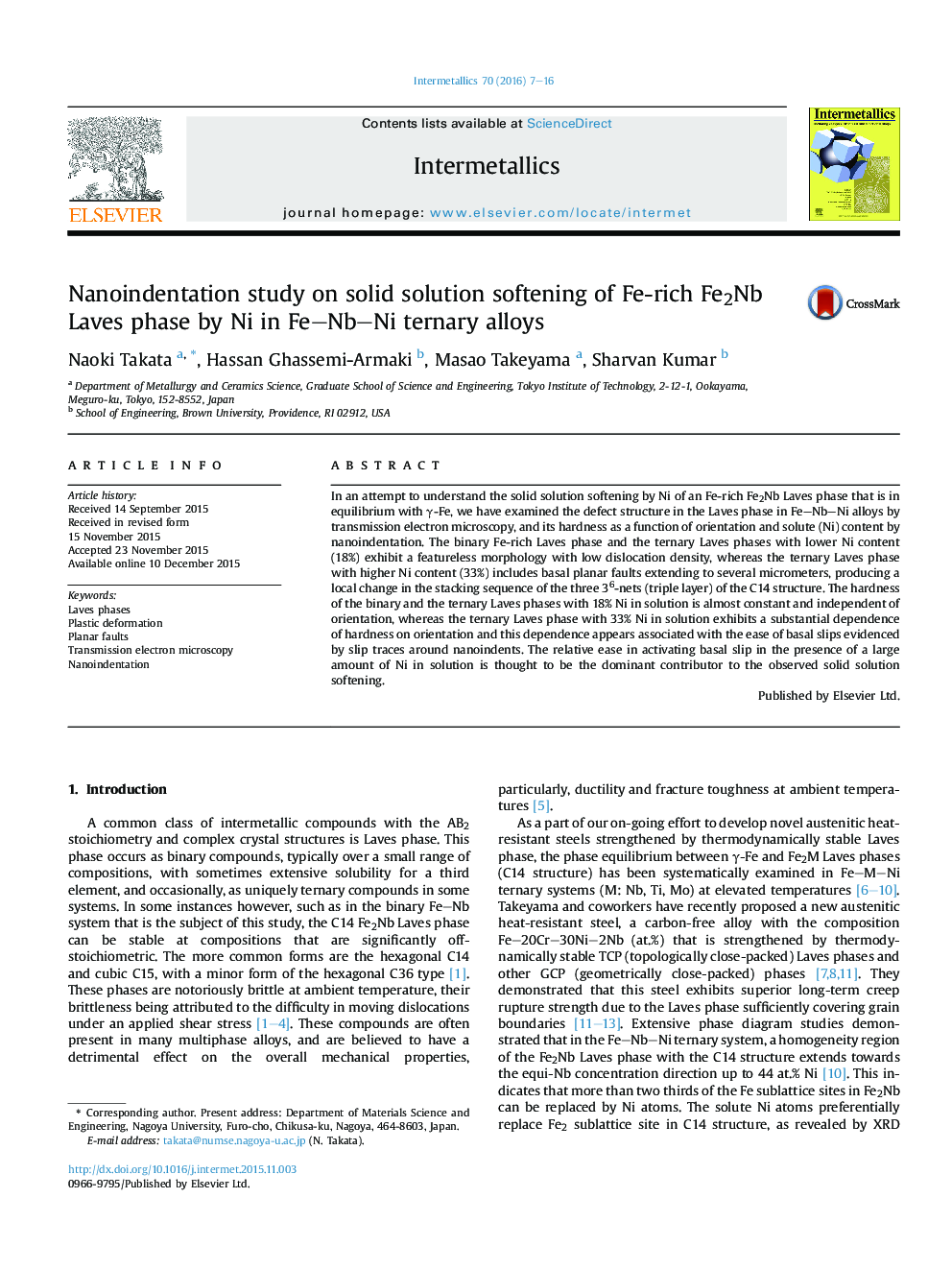| Article ID | Journal | Published Year | Pages | File Type |
|---|---|---|---|---|
| 1599673 | Intermetallics | 2016 | 10 Pages |
Abstract
In an attempt to understand the solid solution softening by Ni of an Fe-rich Fe2Nb Laves phase that is in equilibrium with γ-Fe, we have examined the defect structure in the Laves phase in Fe-Nb-Ni alloys by transmission electron microscopy, and its hardness as a function of orientation and solute (Ni) content by nanoindentation. The binary Fe-rich Laves phase and the ternary Laves phases with lower Ni content (18%) exhibit a featureless morphology with low dislocation density, whereas the ternary Laves phase with higher Ni content (33%) includes basal planar faults extending to several micrometers, producing a local change in the stacking sequence of the three 36-nets (triple layer) of the C14 structure. The hardness of the binary and the ternary Laves phases with 18% Ni in solution is almost constant and independent of orientation, whereas the ternary Laves phase with 33% Ni in solution exhibits a substantial dependence of hardness on orientation and this dependence appears associated with the ease of basal slips evidenced by slip traces around nanoindents. The relative ease in activating basal slip in the presence of a large amount of Ni in solution is thought to be the dominant contributor to the observed solid solution softening.
Keywords
Related Topics
Physical Sciences and Engineering
Materials Science
Metals and Alloys
Authors
Naoki Takata, Hassan Ghassemi-Armaki, Masao Takeyama, Sharvan Kumar,
